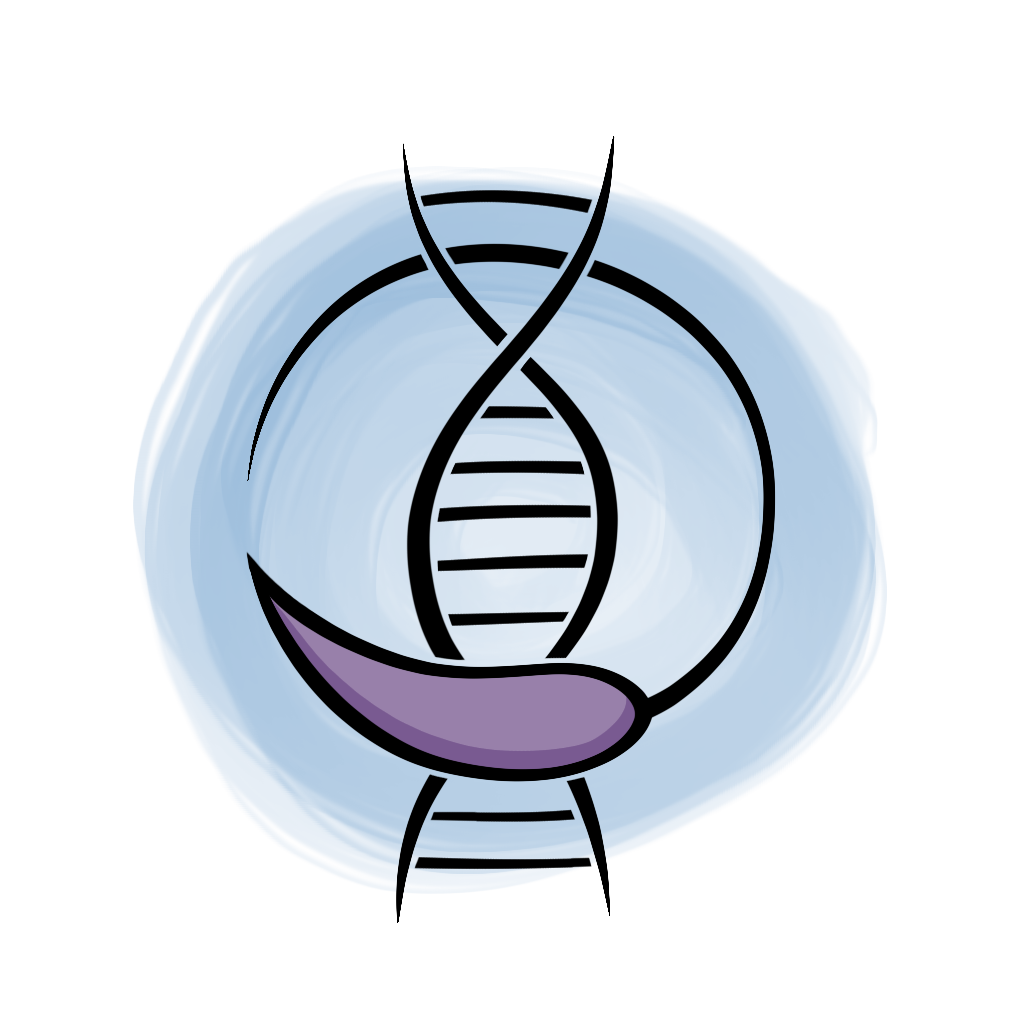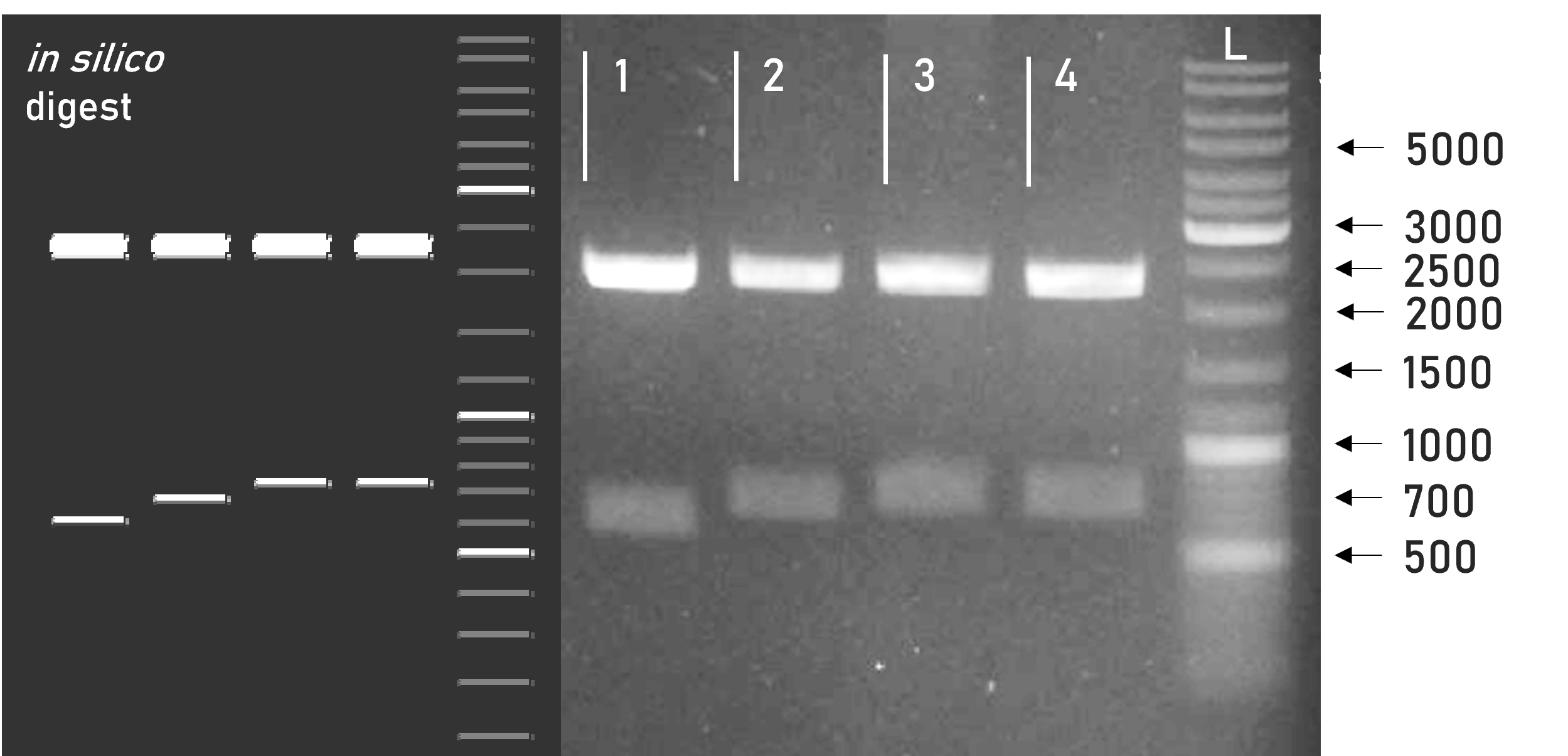Difference between revisions of "Part:BBa K3781012"
| Line 2: | Line 2: | ||
__NOTOC__ | __NOTOC__ | ||
<partinfo>BBa_K3781012 short</partinfo> | <partinfo>BBa_K3781012 short</partinfo> | ||
| + | |||
| + | [[File:T--TU Kaiserslautern--Projektlogo.png|100px|right|MocloMania]] | ||
This part codes for the <b>cyan fluorescent protein</b> mCerulean.<ref><b>R Heim</b>, D C Prasher, R Y Tsien, "Wavelength mutations and posttranslational autoxidation of green fluorescent protein", Proceedings of the National Academy of Sciences Dec 1994, 91 (26) 12501-12504; DOI: 10.1073/pnas.91.26.12501</ref> The protein was originally derived from the green fluorescent protein <b>GFP</b> which was first isolated from the <b>bioluminescent jellyfish</b> <i>Aequorea victoria</i> in 1962.<ref><b>Shimomura, O.</b>, Johnson, F.H. and Saiga, Y. (1962) Extraction, Purification, and Properties of Aequorin, a Bioluminescent Protein from the Luminous Hydromedusan, Aequorea. Journal of Cellular and Comparative Physiology, 59, 223-239. http://dx.doi.org/10.1002/jcp.1030590302</ref> It can be fused to a protein of interest, making it accessible to easy and non-invasive <b>screening opportunities</b> that involve fluorescence monitoring, such as <b>fluorescence spectroscopy</b> or <b>microscopy</b>.<ref><b>M.A. Rizzo</b>, D.W. Piston | This part codes for the <b>cyan fluorescent protein</b> mCerulean.<ref><b>R Heim</b>, D C Prasher, R Y Tsien, "Wavelength mutations and posttranslational autoxidation of green fluorescent protein", Proceedings of the National Academy of Sciences Dec 1994, 91 (26) 12501-12504; DOI: 10.1073/pnas.91.26.12501</ref> The protein was originally derived from the green fluorescent protein <b>GFP</b> which was first isolated from the <b>bioluminescent jellyfish</b> <i>Aequorea victoria</i> in 1962.<ref><b>Shimomura, O.</b>, Johnson, F.H. and Saiga, Y. (1962) Extraction, Purification, and Properties of Aequorin, a Bioluminescent Protein from the Luminous Hydromedusan, Aequorea. Journal of Cellular and Comparative Physiology, 59, 223-239. http://dx.doi.org/10.1002/jcp.1030590302</ref> It can be fused to a protein of interest, making it accessible to easy and non-invasive <b>screening opportunities</b> that involve fluorescence monitoring, such as <b>fluorescence spectroscopy</b> or <b>microscopy</b>.<ref><b>M.A. Rizzo</b>, D.W. Piston | ||
| Line 19: | Line 21: | ||
<html> | <html> | ||
| − | <b>plasmid backbone</b> | + | <b>plasmid backbone</b> <a href="https://parts.igem.org/Part:BBa_K3781103">pAGM1299</a> |
</html> | </html> | ||
<br> | <br> | ||
| Line 25: | Line 27: | ||
<h1>Data</h1> | <h1>Data</h1> | ||
| + | |||
| + | |||
| + | |||
| + | <div><ul> | ||
| + | <li style="display: inline-block;"> [[File:T--TU Kaiserslautern--Gelbild B4PartsRichtig.png|thumb|none|500px|<b>Figure 1</b> <b>Test digest of L0 B4 parts</b> using <i>BsaI</i><br><b>1.</b> pAGM1299 | expected fragments: 2247 + 598 bp<br><b>2.</b> L0_RBD_B4 | expected fragments: 2247 + 675 bp<br><b>3.</b> L0_mCerulean_B4 | expected fragments: 2247 + 720 bp<br><b>4.</b> L0_mVenus_B4 | expected fragments: 2247 + 720 bp<br><b>L:</b> Thermofischer GeneRuler Plus Ladder [bp]]] </li> | ||
| + | </ul></div> | ||
| + | |||
| + | |||
| + | |||
| + | |||
| + | |||
<html> | <html> | ||
| Line 33: | Line 46: | ||
<p>We furthermore provide a specifically domesticated <b>Leishmania expression vector</b>, named <a href="https://parts.igem.org/Part:BBa_K3781105"><b>weird_plex</b></a>, which will package your fusion construct into a functional <b>transcriptional unit</b> that is optimized for high expression in Leishmania. | <p>We furthermore provide a specifically domesticated <b>Leishmania expression vector</b>, named <a href="https://parts.igem.org/Part:BBa_K3781105"><b>weird_plex</b></a>, which will package your fusion construct into a functional <b>transcriptional unit</b> that is optimized for high expression in Leishmania. | ||
<p>The best part? Because of the type IIS restriction properties and the specifity of the generated overhangs, restriction and ligation of your construct can all happen <b>simultaneously</b> in a simple <b>one-step</b>, <b>one-pot reaction</b>. This will safe you a lot of time and frustration in your cloning endeavours!</p> | <p>The best part? Because of the type IIS restriction properties and the specifity of the generated overhangs, restriction and ligation of your construct can all happen <b>simultaneously</b> in a simple <b>one-step</b>, <b>one-pot reaction</b>. This will safe you a lot of time and frustration in your cloning endeavours!</p> | ||
| − | <p>Do we have your attention? | + | <p>Do we have your attention? In the <b>table below</b> you can find some basic information on how our cloning system, along with most other MoClo systems, is set up. Please feel free to check out our wiki to find more information on <a href="https://2021.igem.org/Team:TU_Kaiserslautern/Description">Leishmania and Modular Cloning</a> as well as to understand how this basic part integrates into our <a href="https://2021.igem.org/Team:TU_Kaiserslautern/Part_Collection"><b>part collection</b></a>. See you there!</p> |
</html> | </html> | ||
| + | |||
| + | |||
| + | {| class="wikitable" | ||
| + | |+ style="text-align: left;" | <b>MOCLO</b> | Important nomenclature and parameters | ||
| + | |- | ||
| + | | <b>Level</b> || <b>What does this level contain?</b> || <b>antibiotic resistance</b> || <b>Enzyme used for ligation</b> | ||
| + | |- | ||
| + | | <b>L0</b> || The foundation to every MoClo construct which are basic <b>genetic units</b>, such as coding sequences, promoters, terminators || spectinomycin || BbsI | ||
| + | |- | ||
| + | | <b>L1</b> || Several L0 parts assembled into a functional <b>transcriptional unit</b>, e.g. consisting of promoter, coding region and terminator || ampicillin || BsaI | ||
| + | |- | ||
| + | | <b>L2</b> || Multiple transcriptional units added into one <b>multi-gene construct</b>, e.g. a protein of interest fused to a resistance cassette || kanamycin || BbsI | ||
| + | |} | ||
Revision as of 13:48, 10 October 2021
mCerulean, MocloMania B4
This part codes for the cyan fluorescent protein mCerulean.[1] The protein was originally derived from the green fluorescent protein GFP which was first isolated from the bioluminescent jellyfish Aequorea victoria in 1962.[2] It can be fused to a protein of interest, making it accessible to easy and non-invasive screening opportunities that involve fluorescence monitoring, such as fluorescence spectroscopy or microscopy.[3]
size 26.8 kDa
function fluorescent tag
excitation wavelength 435 nm
emission wavelength 477 nm
cloning position B4
plasmid backbone pAGM1299
Data
The MocloMania collection
This basic part is part of the MocloMania collection, the very first collection of genetic parts specifically designed and optimized for Modular Cloning assembly and recombinant protein expression in the protozoan parasite Leishmania tarentolae.
Are you trying to express complexly glycosylated proteins? Large antibody side chains? Human proteins that require accurate post-translational modification? Then Leishmania might be just the right organism for you! Leishmania tarentolae’s glycosylation patterns resemble those of human cells more closely than any other microbial expression host, while still delivering all the benefits of microbial production systems like easy transfection and cultivation.[4] So instead of relying on mammalian cell lines, try considering Leishmania as your new expression host of choice!
Our MocloMania collection will allow you to easily modify your protein of choice and make it suitable for downstream detection and purification procedures - all thanks to the help of Modular Cloning. This cloning system was first established by Weber et al. in 2011 and relies on the ability of type IIS restriction enzymes to cut DNA outside of their recognition sequence, hereby generating four nucleotide overhangs.[5] Every basic part in our collection is equipped with a specified set of overhangs that assign it to its designated position within the reading frame. These so-called cloning positions are labelled B2-B5 from upstream to downstream. By filling all positions with the basic parts of your choice, you can easily generate variable genetic constructs that code for the fusion protein of your desire.
We furthermore provide a specifically domesticated Leishmania expression vector, named weird_plex, which will package your fusion construct into a functional transcriptional unit that is optimized for high expression in Leishmania.
The best part? Because of the type IIS restriction properties and the specifity of the generated overhangs, restriction and ligation of your construct can all happen simultaneously in a simple one-step, one-pot reaction. This will safe you a lot of time and frustration in your cloning endeavours!
Do we have your attention? In the table below you can find some basic information on how our cloning system, along with most other MoClo systems, is set up. Please feel free to check out our wiki to find more information on Leishmania and Modular Cloning as well as to understand how this basic part integrates into our part collection. See you there!
| Level | What does this level contain? | antibiotic resistance | Enzyme used for ligation |
| L0 | The foundation to every MoClo construct which are basic genetic units, such as coding sequences, promoters, terminators | spectinomycin | BbsI |
| L1 | Several L0 parts assembled into a functional transcriptional unit, e.g. consisting of promoter, coding region and terminator | ampicillin | BsaI |
| L2 | Multiple transcriptional units added into one multi-gene construct, e.g. a protein of interest fused to a resistance cassette | kanamycin | BbsI |
Sequence and Features
- 10COMPATIBLE WITH RFC[10]
- 12COMPATIBLE WITH RFC[12]
- 21COMPATIBLE WITH RFC[21]
- 23COMPATIBLE WITH RFC[23]
- 25INCOMPATIBLE WITH RFC[25]Illegal NgoMIV site found at 679
- 1000COMPATIBLE WITH RFC[1000]
Reference Literature
- ↑ R Heim, D C Prasher, R Y Tsien, "Wavelength mutations and posttranslational autoxidation of green fluorescent protein", Proceedings of the National Academy of Sciences Dec 1994, 91 (26) 12501-12504; DOI: 10.1073/pnas.91.26.12501
- ↑ Shimomura, O., Johnson, F.H. and Saiga, Y. (1962) Extraction, Purification, and Properties of Aequorin, a Bioluminescent Protein from the Luminous Hydromedusan, Aequorea. Journal of Cellular and Comparative Physiology, 59, 223-239. http://dx.doi.org/10.1002/jcp.1030590302
- ↑ M.A. Rizzo, D.W. Piston High-contrast imaging of fluorescent protein FRET by fluorescence polarization microscopy Biophys. J., 88 (2005), pp. L14-L16
- ↑ Langer T, Corvey C, Kroll K, Boscheinen O, Wendrich T, Dittrich W. Expression and purification of the extracellular domains of human glycoprotein VI (GPVI) and the receptor for advanced glycation end products (RAGE) from Rattus norvegicus in Leishmania tarentolae. Prep Biochem Biotechnol. 2017 Nov 26;47(10):1008-1015. doi: 10.1080/10826068.2017.1365252. Epub 2017 Aug 31. PMID: 28857681.
- ↑ Weber E, Engler C, Gruetzner R, Werner S, Marillonnet S (2011) A Modular Cloning System for Standardized Assembly of Multigene Constructs. PLoS ONE 6(2): e16765. https://doi.org/10.1371/journal.pone.0016765


